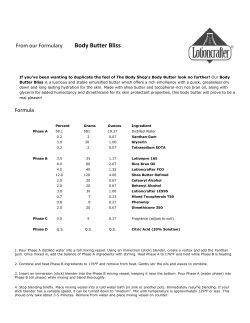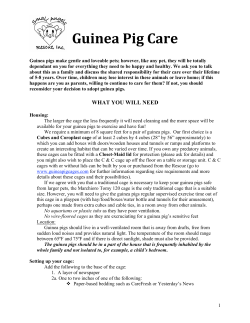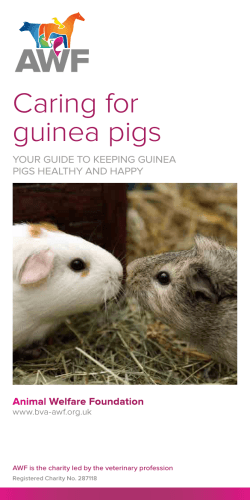
ILEITIS topLine: Lincomix dElIvErs
ILEITIS topline: lincomix® delivers on the bottom line. The Problem: Ileitis •Ileitis is the #1 health problem in growing pigs, as evidenced by both clinical and subclinical prevalence •Nearly 42% of grower/finisher operations reported clinical ileitis and nearly 94% of herds with no clinical signs were found to have subclinical disease1,2 •The economic impact of ileitis totaled $51.6 million ($46.6 million grower/finisher herds and $5 million for breeding herds)3 Far-reaching and prevalent The evidence: LINCOMIX® vs. TYLAN® Study design4: Dose determination study • 100, 4- to 5-week-old pigs • Challenge model Percent PCR Positive Weekly Samples 70% • Fecal samples were collected from each pen weekly 60% Conclusions • Lincomix at 40 and 100 grams/ton significantly (P<0.05) reduced shedding of Lawsonia intracellularis compared to non-medicated controls during the time of peak shedding 50% 40% 30% * * 20% • Tylan (100 grams/ton) had similar shedding of L. intracellularis compared to non-medicated controls during the time of peak shedding 10% 0% 2 3 4 5 week Non-Medicated LINCOMIX, 40 g/T LINCOMIX, 100 g/T Tylan, 100 g/T *Statistically significant (P<0.05) as compared to non-medicated controls Lincomix-fed pigs shed less L. intracellularis than those fed Tylan. LEast Square Means nonmedicated tylan 100 g/T lincomix 40 g/T lincomix 100 g/T ADFI (lb/day) 1.05a 1.16a 1.27b 1.26b ADG (lb/day) .21 .37 .51 b .53b Gain/Feed .18a .32b .39b .42b Mortality (%) 52a 16b 4b 12b measure ab a b Differ significantly (P<0.05) Conclusions • The marginal value for pigs treated with Lincomix at 40 grams/ton was $7.85 per pig vs. $4.12 per pig for those treated with Tylan • Lincomix at 40 grams/ton delivered a $3.73 per pig advantage over Tylan at 100 grams/ton average marginal pig value 10 US $/PIG $ $ 8 $ 6 $ 4 $ 2 $ 0 $7.85 $4.12 Marginal pig value—the value of the average weight gain that occurred during the observation period in each treatment group—was calculated using trial data for feed intake and ADG. These results are based on the following assumptions: $400/ton feed cost; $1/lb. value of marginal gain; 21-day treatment period; 31-day observation period; 15.9 lbs. starting weight; $0.20/g of Lincomix; $0.12/g of Tylan. -$0.03 Non-Medicated Tylan 100 g/T Lincomix 40 g/T Lincomix delivered $3.73 more value per pig than tylan. The 2-in-1 Solution: Lincomix Approved for control of ileitis caused by Lawsonia intracellularis •LINCOMIX is the only antimicrobial treatment that is FDAapproved to combat both porcine proliferative enteropathy (ileitis) and mycoplasmal pneumonia (Mycoplasma hyopneumoniae) •Zero-day U.S. withdrawal period at all feeding levels •Zero-day withdrawal time through finishing meets Japanese export requirements •No weight restrictions The evidence: LINCOMIX vs. ENTERISOL® Study design 5: Efficacy determination study • 192, 3- to 5-week-old pigs Carcass Value $139.17 $140 $136.48 $135 • Challenge model—all pigs were Lawsonia intracellularis challenged on day 28 • Herd screened negative for ileitis $135.03 • Randomized complete block design Four treatment groups • Non-medicated controls $130 • Lincomix 100 grams/ton for 21 days followed by 1-week pulse medications with Lincomix 40 grams/ton at 3-week intervals until slaughter $127.04 $125 $120 • Enterisol vaccinated (per label) on study day 0, in thiosulfate-treated drinking water $0 Control Lincomix Enterisol Lincomix + Enterisol • Lincomix in-feed (same treatment program for Lincomix as above) in combination with Enterisol vaccine average daily gain factorial analysis effect study day 27 through 132 LINCOMIX 1.96a Non-LINCOMIX 1.86b Enterisol 1.911 Non-Enterisol 1.911 Conclusions • Evaluation of carcass values show pigs fed LINCOMIX alone performed numerically better than those vaccinated with Enterisol alone. • Average Daily Gain was evaluated using a factorial analysis. Pigs medicated with Lincomix had a 0.10 increase in average daily gain (P<0.05) versus pigs not given Lincomix (control, vaccine only) This resulted in a 10-pound heavier pig at study day 132. There was no vaccine effect on ADG Lincomix-fed Pigs performed better than Enterisol-vaccinated pigs. the control options: •Employ biosecurity and sanitation measures to minimize bacterial spread •Minimize pathogen load by medicating with Lincomix® Feed Medication—pigs can remain healthy as long as the pathogen load is reduced before lesions and significant clinical signs develop Ileitis control lincomix feed medication timing: for ileitis control • For clinical ileitis control, begin Lincomix approximately 1–2 weeks prior to clinical signs • For subclinical ileitis control, begin Lincomix approximately 3–6 weeks prior to Lawsonia seroconversion 1–2 wks infection >2–4 wks clinical signs seroconversion Lincomix Feed Medication period lincomix feed medication guidelines: swine treatment/application amount of lincomix per ton of complete feed number of treatments/timing Ileitis control (prior to clinical symptoms onset) 40 grams 2 weeks prior to onset of clinical signs, feed for 3 weeks and/or following 100 grams/ton pulse to further control disease Ileitis control (clinical symptoms present) 100 grams 3 weeks Mycoplasmal pneumonia (reduces severity) 200 grams 21 days Dysentery (treatment and control) 100 grams 3 weeks* Dysentery (control) 40 grams 1 treatment† *Or until signs of disease (watery, mucoid or bloody stools) disappear, followed by 40 grams of lincomycin per ton. † Feed 40 grams/ton as sole ration. Recommended for use in animals or on premises with a history of swine dysentary but where symptoms have not yet occurred. Consult the product label for complete information. Self-correcting side effects associated with Lincomix may include diarrhea and/or swelling of the anus and rarely reddening of the skin and irritable behavior. Lincomix should continue to be fed if side effects occur. Lincomix should not be fed at 20 grams per ton of complete feed to swine intended for breeding. The effects of lincomycin on swine reproductive performance, pregnancy and lactation have not been determined. INDIVIDUAL PIG CARE. IT’S THE RIGHT THING TO DO.™ 1 USDA. 2007. Swine 2006, Part II: Reference of Swine Health and Health Management Practices in the United States, 2006. USDA:APHIS:VS, CEAH. Fort Collins, CO. #N479.1207 2 Armbruster GA, Deen J, Gebhart CJ, Pelger GA, Keffaber KK, Parks CW. Review of Lawsonia intracellularis seroprevalence screening in the United States, June 2003 to July 2006, in Proceedings. 38th Annu Meet Amer Assoc Swine Vet, 2007. 3 Holtkamp D, Rotto H, Garcia R. The economic cost of major health challenges in large U.S. swine production systems, in Proceedings. 38th Annu Meet Amer Assoc Swine Vet, 2007. 4 Data on file, Study Report No. 768-9690-0-CPC-97-002, Pfizer Inc. 5 Data on file, Study Report No. 1921R-60-04-231, Pfizer Inc. All brands are the property of their respective owners. ©2009 Pfizer Inc. All rights reserved. LIN09016
© Copyright 2026





















